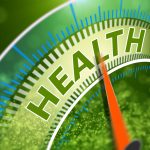
Education
Reading Product Labels: Deciphering Which Ingredients, Chemicals to Avoid
4 min. read
There are thousands of ingredients used to make foods. New requirements by the Food and Drug Administration (FDA) have helped clarify food labels. Just three years ago, new rules required “Nutrition Facts” on food and drink packaging to indicate the presence of so-called “added sugars.”
Nonetheless, there are a myriad of preservatives and additives to consider. And beyond food labels, there are so-called “forever chemicals” found in food packaging, some clothing and other products.
In a new Instagram LIVE, Reading the Labels, experts shed some light on the topic of ingredients and chemicals to keep in mind.

Watch the Instagram LIVE:
Reading the Labels
“We’ve all gone to the store with a list of items that we need, and we’ve all gone through the aisles to process every single item on our list,” said Kelly Saks, content creator and digital entrepreneur, who hosted the Instagram LIVE. “And we assume that because it’s on the store shelf that it’s something that’s safe. But do you ever stop to read the labels? I know I do. Reading the labels can tell us exactly what we’re putting in our bodies, and it can help and reduce our exposure to toxic ingredients.”
The panel of experts for the discussion: John P. Diaz, M.D., Chief of Gynecological Oncology at Miami Cancer Institute, part of Baptist Health; Lucette Talamas, a registered dietitian with Community Health at Baptist Health South Florida; and Jeannette Kaplun, CEO and founder of Hispana Global.
“Being mindful of the harmful products that are used in our everyday lives is really important,” said Ms. Saks in a question for Ms. Kaplun. “What are some of those products that you try to avoid at all costs?”
“Well, the list is really long and just like you, I am constantly reading labels,” responded Ms. Kaplun. “For example, I’m always avoiding parabens, which are certain kinds of (chemicals) used as preservatives, which way back were used to soften certain plastics. There’s BPA, or bisphenol A, which sometimes can coat some of the canned vegetables and soups that we consume. And forever chemicals, which has already been in the news. But honestly I avoid all of those and trans fats. So, the list is long.”
PFAS (per-and polyfluoroalkyl substances), more commonly known as “forever chemicals,” represent a class of thousands of man-made chemicals that have been around since the 1940s. And as the nickname suggests, they are present for a long time because they don’t break down, and that can lead to widespread contamination. PFAS are used to make fluoropolymer coatings and products that resist heat, oil, stains, grease, and water. These coatings can be in a range of products, including clothing, furniture, adhesives, food packaging, heat-resistant non-stick cooking surfaces, and the insulation of electrical wire, according to the U.S. Centers for Disease Control and Prevention (CDC).
Certain chemicals or other cancer-causing agents have also been around for years, but many have been restricted or discontinued as U.S. regulators take action against ingredients that are proven to be harmful. Moreover, there a many risk factors linked to cancers, explains Dr. Diaz.
“There are a lot of risk factors associated with cancer: age, your family history, viruses, bacteria, your lifestyle — if you’re a smoker or heavy drinker, and coming into contact with harmful substances,” said Dr. Diaz. “A lot of these things contribute to developing a cancer, and there’s not one thing that triggers it. But, we do know that coming in contact with harmful chemicals is probably a small part of it. And we’re still learning a lot about these chemicals.
“And it depends a lot on which chemical you’re exposed to. How long were you exposed to it? How were you exposed to that? Did you breathe it in or touch it … and how often were you exposed to it? So, there are some carcinogens that we know increase your risk of developing cancer — like asbestos, arsenic, benzene, and vinyl chloride. But again, it’s not that one time touching these things that is going to have you develop a cancer.”
When it comes to food ingredients that may be harmful, there’s much confusion out there nowadays about refined vegetable oils and seed oils. Ms. Talamas explains one “fear” that currently circulating on social media.
“There’s concern about refined vegetable oils and refining seed oils,” said Ms. Talamas. “But, honestly, there’s not a lot of science to back up the big fear behind them. At the end of the day, vegetable oils and seed oils are classified as unsaturated fats. And their fatty acid composition is actually very favorable to include in your diet for a healthy heart and for healthy cholesterol levels.”
Polyunsaturated and monounsaturated fats from vegetable oils can lower the risk of cardiovascular disease when replacing saturated fats from dairy and meat, clinical studies have confirmed.
The biggest fear regarding refined oils is associated with their use at restaurants and fast-food outlets.
“The big concern with refined oils is when they’re being used in the restaurant industry,” explains Ms. Talamas. “They’re used at that very high heat and they’re not always replaced frequently. So, that can cause some damaging byproducts in those oils, which is concerning for those eating out at different restaurants and fast-food chains”
Learn more from the U.S. Food and Drug Administration on: How to Understand and Use the Nutrition Facts Label.
Healthcare that Cares
Related Stories
View All Articles
Healthy Resolution: Figuring Your Ideal Weight and Why That's Important
December 27, 2023
4 min. read

Overindulging Over the Holidays? Tips for Defeating Acid Reflux, Heartburn Naturally
December 20, 2023
2 min. read
